The Future of Journalism Is Already Here
In 2024, writers with StudentNation captured the stories of an emerging generation—and revealed where journalism is headed.

Student protest was back in a big way in 2024. Not that campus activism was ever gone, but it exploded this past year, most notably in response to the genocide in Gaza. There were also climate strikes, unionization drives, calls for student debt relief, and consequential abortion rights activism. Coast to coast, students organized with exceptional clarity, focus, and tenacity—and as they did, StudentNation worked tirelessly to give voice to the emerging generation. We remain proud, as well as astonished, to be virtually alone among national news outlets in regularly publishing student journalists. StudentNation published more than 100 original articles in 2024 on a wide range of topics; we’ve selected excerpts from a handful to highlight the extraordinary range and reporting of the new generation. Read more at TheNation.com/studentnation. We’re deeply grateful to the Puffin Foundation, whose generosity to the Nation Fund for Independent Journalism makes this work possible.
—Peter Rothberg and Julian Epp, editors of StudentNation

Surfers Are Fighting to Save the Waves—and the Planet
by Ilana Cohen / May 28, 2024
On any given day from the cliffside esplanade of Lima, Peru, passersby can look out to find people dipping in and out of the Pacific Ocean’s clear blue waters. Visited by more than 20,000 surfers annually, Lima is home to several of the 43 surf breaks or “waves” that receive protection in Peru under national law. Following decades of grassroots advocacy led by surfers and environmentalists, the first-of-its-kind “Law of the Breakers” went into effect in 2014, recognizing surf breaks as state property and giving them the right to protection from harmful commercial and industrial development.
Although a variety of indirect legal mechanisms for conserving waves exist globally, Peru is one of the few countries with a law dedicated to protecting them. Amid mounting threats to coastal access—from beachfront privatization and coastal infrastructure projects to the accelerating climate crisis—surfers and community activists inspired by the progress in Peru are joining forces with environmental lawyers to bring such protections to the rest of Latin America. In Chile and Panama, policymakers have introduced surf break bills in their legislatures, and advocates in Ecuador are gathering signatures from the public to push for legislation in the National Assembly.
While treating a wave as a legal entity may seem odd, the moves come amid a growing acceptance that nature and planet Earth are entitled to certain fundamental rights under the law. In the past decade, this understanding—long acknowledged among Indigenous cultures—has entered into national legal systems across Latin America. In 2008, Ecuador became the first country to include the rights of nature in its Constitution. A few years later, Bolivia passed a law recognizing nature’s right to exist and thrive, and Panama enacted a similar law in 2022. Individual rivers have also been granted the status of legal persons in New Zealand, India, and, most recently, Peru.
If the movement is successful, it could not only help conserve the coasts through innovative uses of the law, but also help solidify a powerful new coalition of environmental protectors.
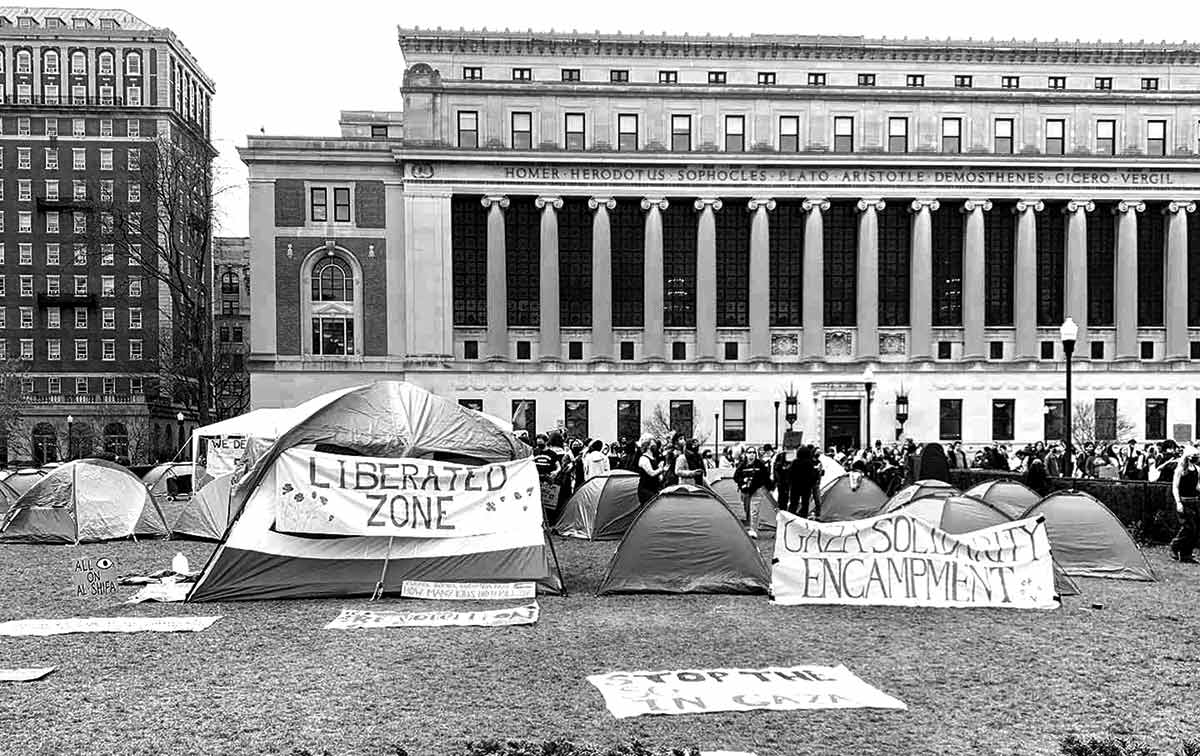
Inside the Gaza Solidarity Encampment at Columbia University
by Lara-Nour Walton / April 19, 2024
Around 4 am on April 17, hundreds of columbia University students set up tents on the East Butler Lawn, establishing what they called a Gaza Solidarity Encampment in protest of the university’s role in helping fund the war in Gaza.
The occupation, organized by the Columbia University Apartheid Divest coalition (CUAD), Students for Justice in Palestine (SJP), and Jewish Voice for Peace (JVP), had been planned for months. The encampment was an escalation of previous pro-Palestine actions and was designed to echo the university’s history of protest. “Columbia University has a rich legacy of student activism, from Vietnam War protests in 1968 to being the first Ivy League school to divest from Apartheid South Africa in 1985,” wrote CUAD in a statement that day. “The Gaza Solidarity Encampment will remain until Columbia University divests all finances, including the endowment, from corporations that profit from Israeli apartheid, genocide, and occupation in Palestine.”
University officials quickly locked the campus down. Only Columbia ID holders were able to access school property, with police, campus security, and private security stationed at every entrance. Members of the National Lawyers Guild, wearing neon green hats, had arrived that morning to defend the students’ right to protest. By the afternoon, hundreds of other Columbia students had shown up in solidarity with the occupation, many bringing donations and supplies. “There were a lot of reports that people were freezing in the morning,” said Roxanne, an undergraduate student, “and I know that there’s supposed to be rain later tonight, so I got emergency camping blankets from a nearby hardware store. I figured they would be more effective than regular blankets, in case conditions get really wet later.”
As the first day turned to dusk, picketers and demonstrators remained energized—chanting, dancing dabke, and beating drums. When the clock struck 4 am on April 18, the occupation, against all odds, had lasted 24 hours.
“I am feeling empowered…by our resilience in the face of tremendous crackdown and repression,” Daria Mateescu, president of Columbia Law Students for Palestine, told The Nation.
How Yale University Surveils Pro-Palestinian Students
by Theia Chatelle / May 20, 2024
As pro-Palestinian student protesters have slowly escalated their tactics in response to a deadlock on divestment and the escalating violence in Gaza, Yale University has deployed a variety of measures to monitor student dissent. Documents obtained by The Nation under Connecticut’s Freedom of Information Act illustrate a pattern of targeted surveillance by the university against students engaged in pro-Palestinian activism.
These tactics, the documents reveal, include the presence of administrators at rallies, surveillance of students’ social media accounts by police, and coordination between campus, local, and state police forces.
Yale has so far avoided the drama of presidential resignations, such as those at Harvard and the University of Pennsylvania, and the protests were largely not disruptive to campus life. Nonetheless, police arrested 47 students at an encampment on April 23.
However, records of conversations between Yale Police Department officers and university officials show that, in seeking to avoid the fate of its fellow Ivy League institutions, Yale has maneuvered to exert control over the student protests.
Pilar Montalvo, an assistant vice president for university life, has emerged as a prominent figure in regulating students’ on-campus activities. “In [Montalvo’s] interactions with students, she tries to shut down whatever we’re doing,” said Patrick Hayes, a Yale student involved in pro-Palestinian activism on campus.
Montalvo, the documents reveal, is frequently sent to protests to handle tense interactions, including during an incident in which Zionist counterprotesters attacked pro-Palestinian organizers. In one incident for which she drew criticism, Montalvo allowed a pro-Israel student to take down a poster memorializing Palestinians killed in Israel’s attacks on Gaza. In a report on the incident in the Yale Daily News, she was quoted as saying, “I should have removed the poster myself rather than allowing a student to do so.” Montalvo did not respond to multiple requests for comment.
The documents, which date from the beginning of October to the end of December 2023, make clear that Yale’s administrative bureaucracy—which now outnumbers its undergraduate students—has acted on numerous occasions to shut down conversations about anti-Palestinian and anti-Muslim hate incidents that have occurred on campus.
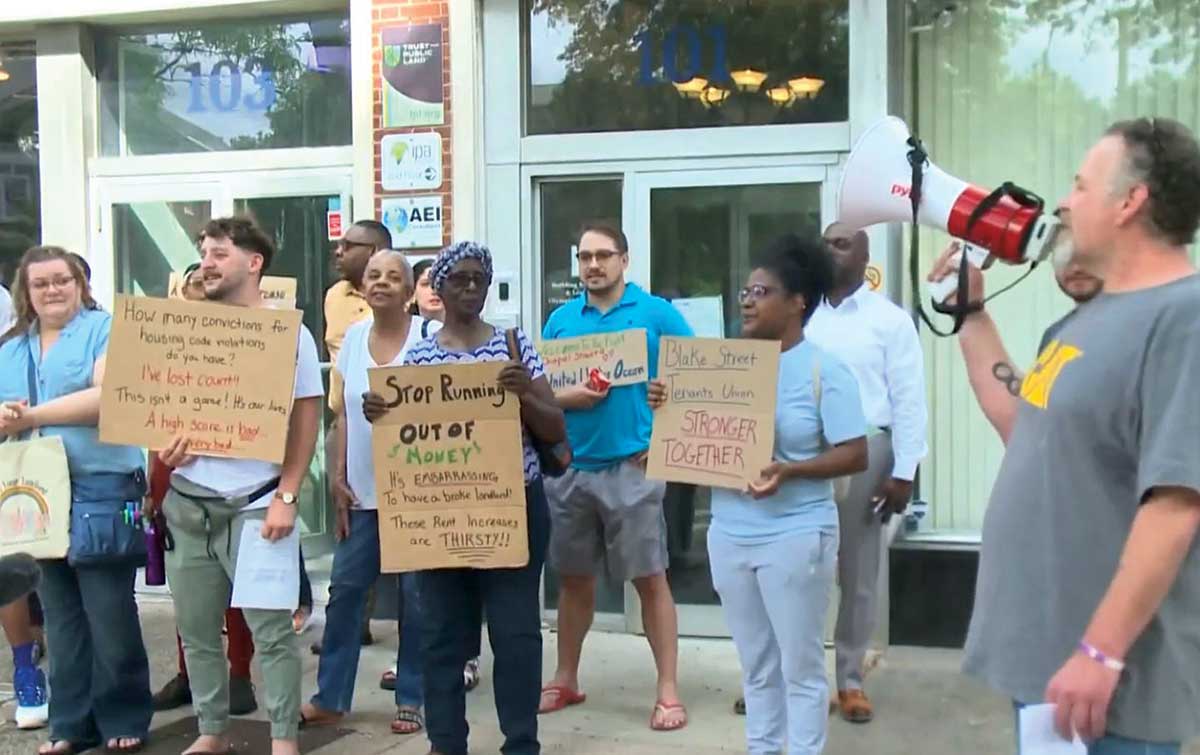
The Connecticut Tenants Union Trying to Buy Their Apartment Building
by Maggie Grether / September 2, 2024
The last time her apartment changed ownership, ShamelYah Yasharel found herself lining the rooms with mousetraps.
In January 2022, Ocean Management purchased Yasharel’s building, a 70-unit complex in New Haven, Connecticut. Under the mega- landlord, conditions quickly deteriorated. Tenants experienced heating issues, faulty electrical wiring, and broken fire alarms. Rusty nails littered the basement. “Every mousetrap kept being full,” Yasharel said. “They kept being full, and [the mice] kept coming and coming.”
Popular
“swipe left below to view more authors”Swipe →As the unanswered maintenance requests accumulated, some tenants of the building, at 311 Blake Street, knocked on doors to organize their neighbors. The tenants decided to unionize—banding together to collectively bargain over the issues of rent, evictions, and maintenance. And over the course of the next two years, the Blake Street tenants found remarkable success wielding their collective power.
But this June, they received destabilizing news. During the past two years, the union had watched as Ocean Management sold dozens of its other properties in the city. Now Blake Street—once considered Ocean’s flagship property—was on the market.
“At first it was really scary,” said Yasharel, a lifelong New Havener who served as one of three tenants on the union’s negotiating team. “Now I’m figuring, ‘Well, we’re gonna have to start all over again.’”
But as the union and organizing partners discussed what this sale might mean, a novel idea emerged: What if the tenants could purchase the building—for themselves?
The idea of tenant control was obviously compelling. Tenants at Blake Street could shake off a neglectful, unresponsive landlord and keep their homes off the speculative real estate market. And if tenants controlled the building—instead of a new landlord who could squeeze money out of the property with rent increases—they could invest the money generated back into the property, addressing maintenance problems and keeping their building safe and affordable.
Yet the path to taking control of their building is far from clear. The tenants first have to find the money to place a competitive offer and then define a system of collective ownership. The task requires tenant organizers to wade into the world of real estate acquisition and financing.
Still, even as they’ve faced obstacles, the Blake Street tenants have continued to push forward. Jessica Stamp, a Blake Street Tenants Union steward, imagines what it would look like for her and her neighbors to own their building. She wants to fix electrical problems and seal leaks, to bring bathrooms up to code and install dishwashers in every apartment. She dreams of larger projects, too, like installing solar panels and creating a communal meeting space. Most important, tenants would work to keep rents affordable.
“We wouldn’t be taking all the income that’s being made off the building and reinvesting it off-property,” Stamp said. “We would be investing it on the property. Our goal would be to fix this place up.”

Ballet Dancers’ Next Move—Union Organizing
by Lucy Tobier / October 4, 2024
Lauren Post, like most other professional ballet dancers, began her career as a toddler. She left home at 13 for dance boarding school and then worked for 18 years with the Atlanta Ballet and then the American Ballet Theatre (ABT). Because her career was “all-consuming,” Post said, she never had time to think about life outside of ballet until it was time to leave. However, when the time came, Post was left without help or support from the company with which she had spent her life.
Now, facing the end of her ballet career—most dancers retire in their mid-30s because of the effects of the repeated, high-impact motions and stress they’ve put on their ankles and hips—she’s confronting a labor market that doesn’t recognize the value of dancers without formal educational backgrounds.
“Dancers are some of the hardest workers that you can meet,” Post said. “And anyone I know who’s in a management position—who has hired dancers in the past—raves about how focused and hardworking former dancers are, and willing to go above and beyond.” In the absence of robust job-training support from ABT, Post turned to Second Act, a nonprofit organization that helps people make career transitions by connecting them with mentors.
Alexandra Basmagy, a dancer who retired last spring after more than a decade with ABT, said she felt her peers were too often left to their own devices, forced to rely on outside organizations like Second Act to find job support. But, she said, she is seeing a cultural shift among dancers, with members of the next generation starting to think earlier about end-of-career support. And in her role with her union’s negotiation committee, she has seen younger dancers increasingly advocating for better working conditions in a job with constant physical demands.
Like many other industries, ballet has seen a rise in unionization over the past five years—especially after the pandemic began in 2020, when ballet dancers faced unprecedented job insecurity. According to Dance/USA, the unemployment rate for dancers more than quadrupled in 2020 as consumer spending on the performing arts dropped by more than $30 billion. Over the past eight years, 11 ballet companies, one touring production, and the faculty at the School of American Ballet have unionized for the first time.
Their national labor union, the American Guild of Musical Artists, has built on this momentum by connecting dance companies so that they can learn from one another. Contract negotiations have brought higher pension contributions, mandated rest times, and living wages for a job that requires years of training. Transition support, such as mentors and internships, is not yet a feature in these contracts, but AGMA often helps dancers connect with nonprofits like the Entertainment Community Fund, formerly known as the Actors Fund, which provides career counseling and grants.
Griff Braun, AGMA’s national organizing director and a former ballet dancer, has seen younger dancers who are passionate about a good career leading the union push. “Forming a union is an act of love, in a sense,” Braun said. “If you hated the place you worked, you would just leave. It’s people who want to stay that want to make it better who form a union.”
In the future, Basmagy hopes to see higher pension contributions for the younger dancers she advocated for during her time on the union committee. After the most recent round of ABT negotiations, pension contributions will rise to 5 percent in three years, which she says is still low compared with those of similar companies: New York City Ballet contributes 13.5 percent, and San Francisco Ballet contributes 15.5 percent.
Even so, Basmagy is encouraged by the younger generation’s interest in discussing power dynamics and fairness. “People want to come in feeling like an adult and a respected artist, because it is a job,” she said. “We do love it, but we also have to make a living off it.
“People don’t want to just be the little dancing puppets that are told what to do and how to do it,” she added. “We want to make sure that we have a voice, and what we’re doing is correct and safe and in a pleasant environment for everybody.”
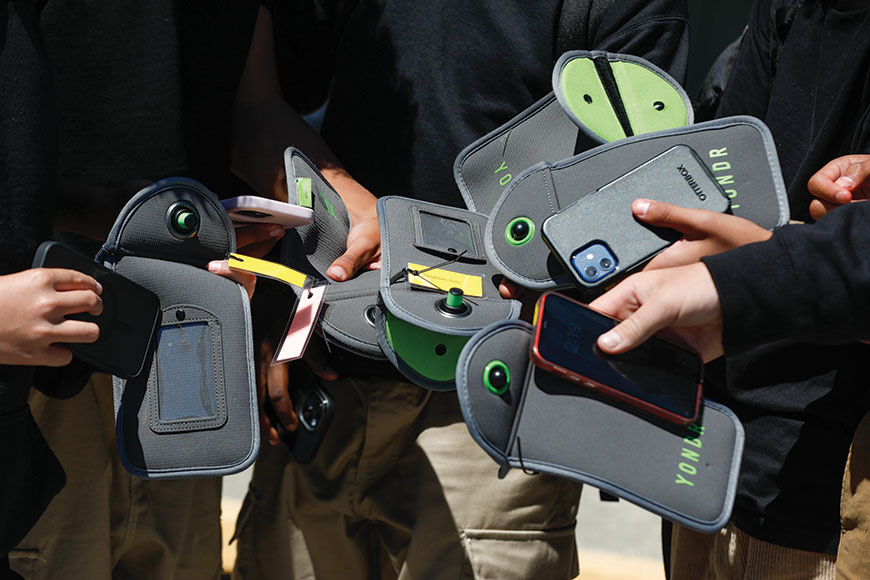
Why a School Cell Phone Ban Is the Wrong Call
by Ushoshi Das / October 8, 2024
All across the country, states and school districts are enacting laws and policies to restrict the use of smartphones by students. In New York, Governor Kathy Hochul proposed a statewide ban on smart devices in schools, while Mayor Eric Adams and former schools chancellor David Banks pushed for a ban in New York City.
Of course, past generations of teenagers survived without such devices, but they also did not grow up in a world where frequent school shootings were a reality. As a student in my fourth and final year at Stuyvesant High School, where we are still allowed to have phones, I’ve experienced several bomb scares—all hoaxes, but nonetheless unsettling—and the disruptions got me home hours late. I was able to text my parents, which prevented them from worrying. Governor Hochul argues that “going on your cell phone” during an emergency might distract students and place them “in harm’s way.” But if we cannot guarantee safety in our own classrooms, what is the wisdom in taking away perhaps the one line of communication we have?
We need phones, and I’m not just saying that because I’m a screenager. At a school like mine with a large population, phones are critical for everyday communication. My classmate Astrid Harrington bemoaned the logistical issues that a ban could impose on competitive teams: “Stuyvesant’s debate team uses Messenger to deliver messages throughout the day. Math team uses Discord and e-mail to send schedules to members. I used e-mail last year to spread the word about Spanish tutoring sessions.”
Teachers at my school also use phones as part of their lessons, both as a way to enrich the learning experience through online educational games and to teach digital literacy. Pretty much every day, a teacher asks my class to pull out our phones and do research.
It’s true that cell phones distract us. According to a study by Common Sense Media, about 97 percent of students use their phones “for a median of 43 minutes” during the school day. That’s the length of one class at my school. But generations of students have zoned out without the aid of tech, as decades of overlapping graffiti on our school desks attest. A simple reminder before class by the teacher to pay attention and not look at our phones would probably increase concentration. If that doesn’t work, putting phones in an organizer at the front of the class as the students walk in is a much better idea than a blanket ban.
“Teens would continue to use phones at home, potentially for more time than before, in order to compensate for lost time during the school day,” said Harrington. “They would also find ways around the ban. High schoolers are nothing if not persistent.”
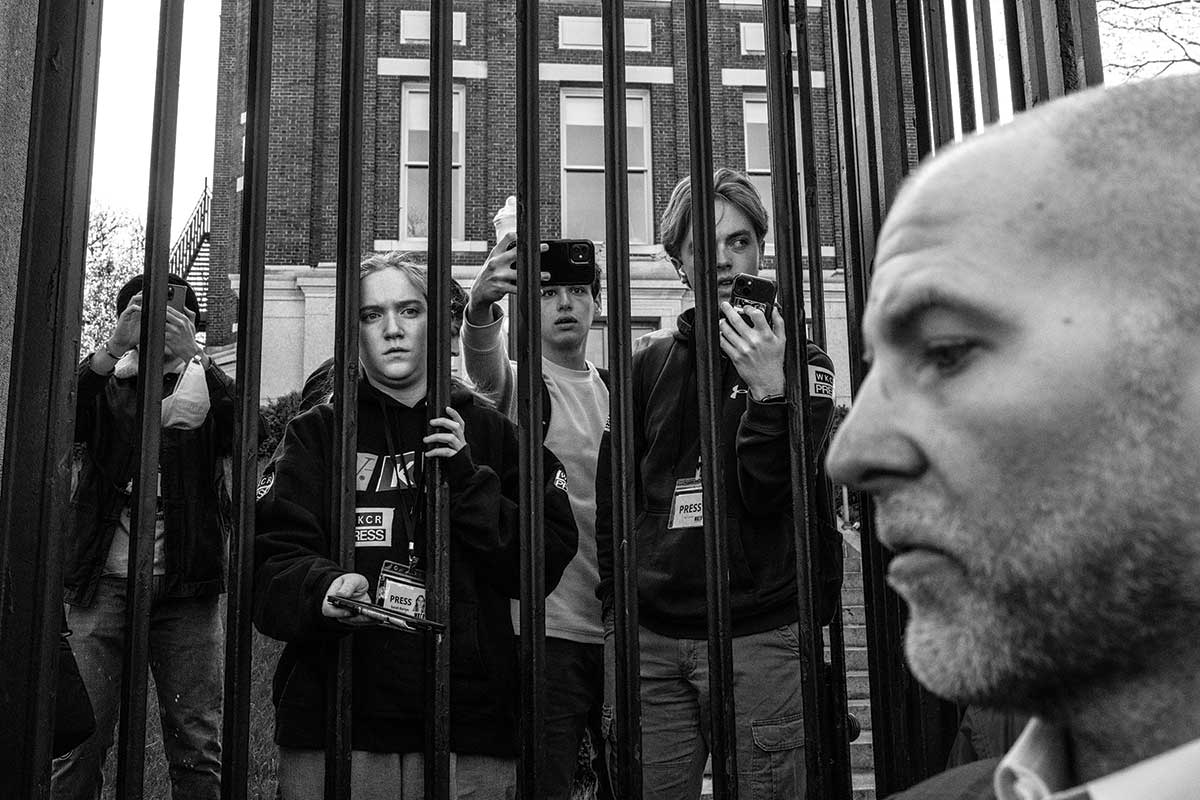
Student Journalists Are Needed Now More Than Ever
by Amber X. Chen / May 8, 2024
On May 3, we celebrated world press Freedom Day. As of that day, more than 100 journalists had been killed in Gaza since October 7, 2023—an average of five per week. In fact, in Gaza, more journalists were killed in the first three months of the war than in all of World War II and the Vietnam War combined.
Two days later, on May 5, the Israeli government raided and shut down Al Jazeera’s offices in Jerusalem. At the same time, in the United States—where freedom of the press is enshrined in our Constitution’s First Amendment—law enforcement and university administrations were busy disregarding the rights of student journalists who were working tirelessly to cover the ongoing pro-Palestine campus protests.
At UCLA, Daily Bruin reporters were gassed, assaulted, and threatened with arrest. Four Daily Bruin reporters were also targeted and assaulted by pro-Israel counterprotesters—while the LAPD took nearly four hours to intervene. At Dartmouth, two student journalists were arrested for criminal trespass despite repeatedly identifying themselves as members of the press. Their charges have yet to be dropped. At Columbia, student journalists at the Columbia Daily Spectator and WKCR were threatened with arrest by the NYPD, mocked, pushed, and shoved, and then barred from their own campus. And over the weekend of May 4, student reporters with USC Annenberg Media and the Daily Trojan were denied critical access to cover the LAPD’s predawn raid—a direct violation of the California Penal Code, which grants student journalists the right to freely cover any campus activities.
As the mainstream media has repeatedly mischaracterized pro-Palestine groups on campus, the work of student journalists is more critical than ever. Student journalists are those best equipped to tell the stories on university campuses, because they are a part of the community.
“The job of reporters is that they’re trying to tell stories that people don’t want told. So, by nature, conflict is at the heart of journalism or the act of journalism,” said Geeta Anand, a Pulitzer Prize–winning journalist and dean of the UC Berkeley School of Journalism. “But in the US, where the freedom of the press is supposed to be protected, we as citizens really believe that our government and our law enforcement should not be trying to prevent journalists from doing their jobs.”
While it’s important for student reporters to be identified as journalists, the assault of four Daily Bruin reporters is a stark reminder that student journalists can be targeted for simply being members of the press. “What happened at UCLA was appalling,” Anand said. “It means your safety is something you have to be constantly thinking about. It’s terrible that we have to do this, but it doesn’t mean that you stop covering the story.”
Indeed, student journalists have made it abundantly clear that they have no plans to stop their coverage anytime soon.
“Actually, if anything, [my arrest] has made me love the field more,” said Alesandra “Dre” Gonzales, a reporter, photographer, and videographer for The Dartmouth who was arrested while covering the campus protesters’ clash with police. “Journalism is so important. It’s such a fundamental thing within our lives to be able to report on issues big, small, local, national, or global so that people can be informed.”
Support independent journalism that exposes oligarchs and profiteers
Donald Trump’s cruel and chaotic second term is just getting started. In his first month back in office, Trump and his lackey Elon Musk (or is it the other way around?) have proven that nothing is safe from sacrifice at the altar of unchecked power and riches.
Only robust independent journalism can cut through the noise and offer clear-eyed reporting and analysis based on principle and conscience. That’s what The Nation has done for 160 years and that’s what we’re doing now.
Our independent journalism doesn’t allow injustice to go unnoticed or unchallenged—nor will we abandon hope for a better world. Our writers, editors, and fact-checkers are working relentlessly to keep you informed and empowered when so much of the media fails to do so out of credulity, fear, or fealty.
The Nation has seen unprecedented times before. We draw strength and guidance from our history of principled progressive journalism in times of crisis, and we are committed to continuing this legacy today.
We’re aiming to raise $25,000 during our Spring Fundraising Campaign to ensure that we have the resources to expose the oligarchs and profiteers attempting to loot our republic. Stand for bold independent journalism and donate to support The Nation today.
Onward,
Katrina vanden Heuvel
Editorial Director and Publisher, The Nation
More from The Nation
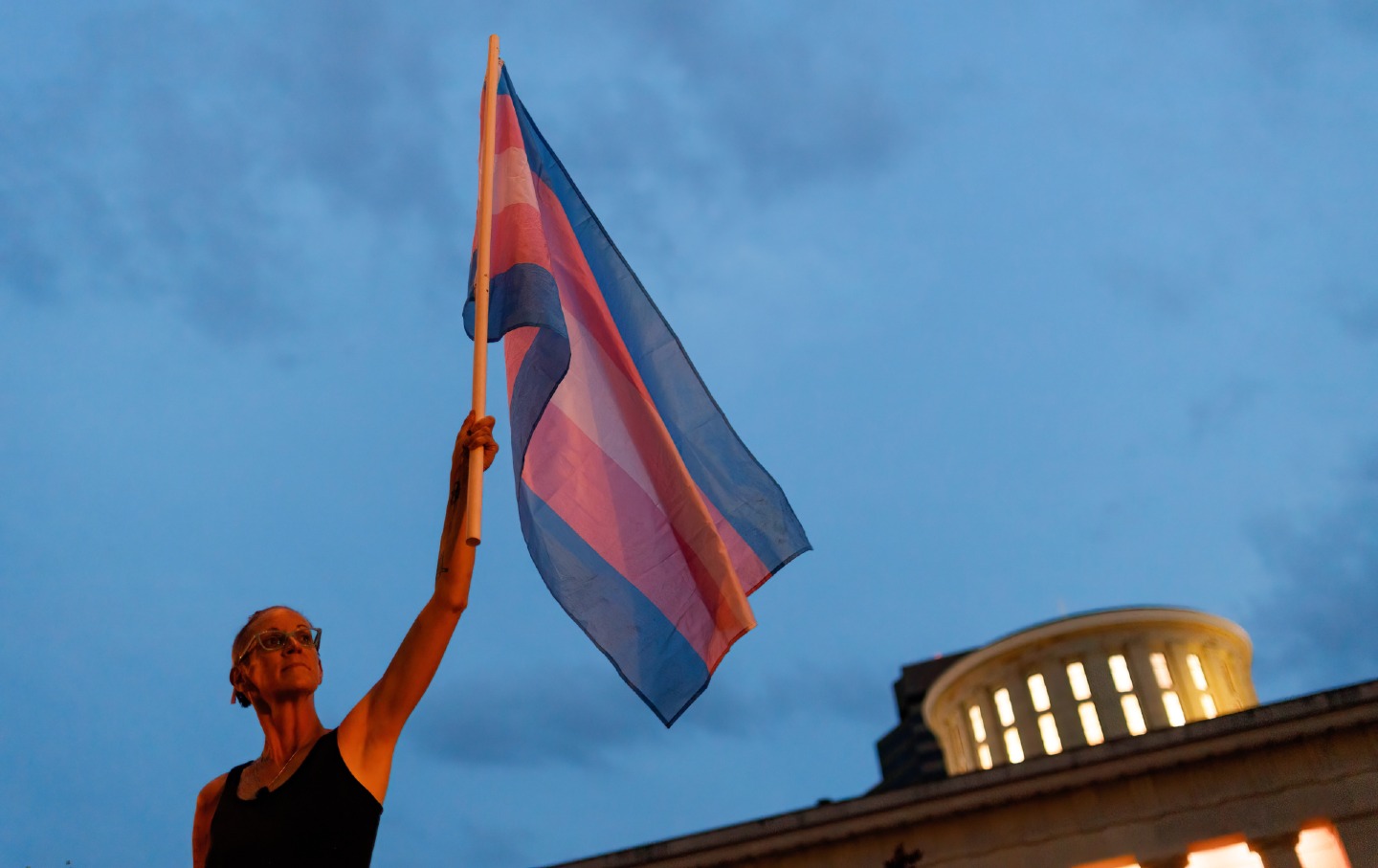
“I’m Terrified”: Trans-Feminine Athletes in Their Own Words “I’m Terrified”: Trans-Feminine Athletes in Their Own Words
In part two of a series, trans women athletes describe what it’s like to compete in the Trump era.
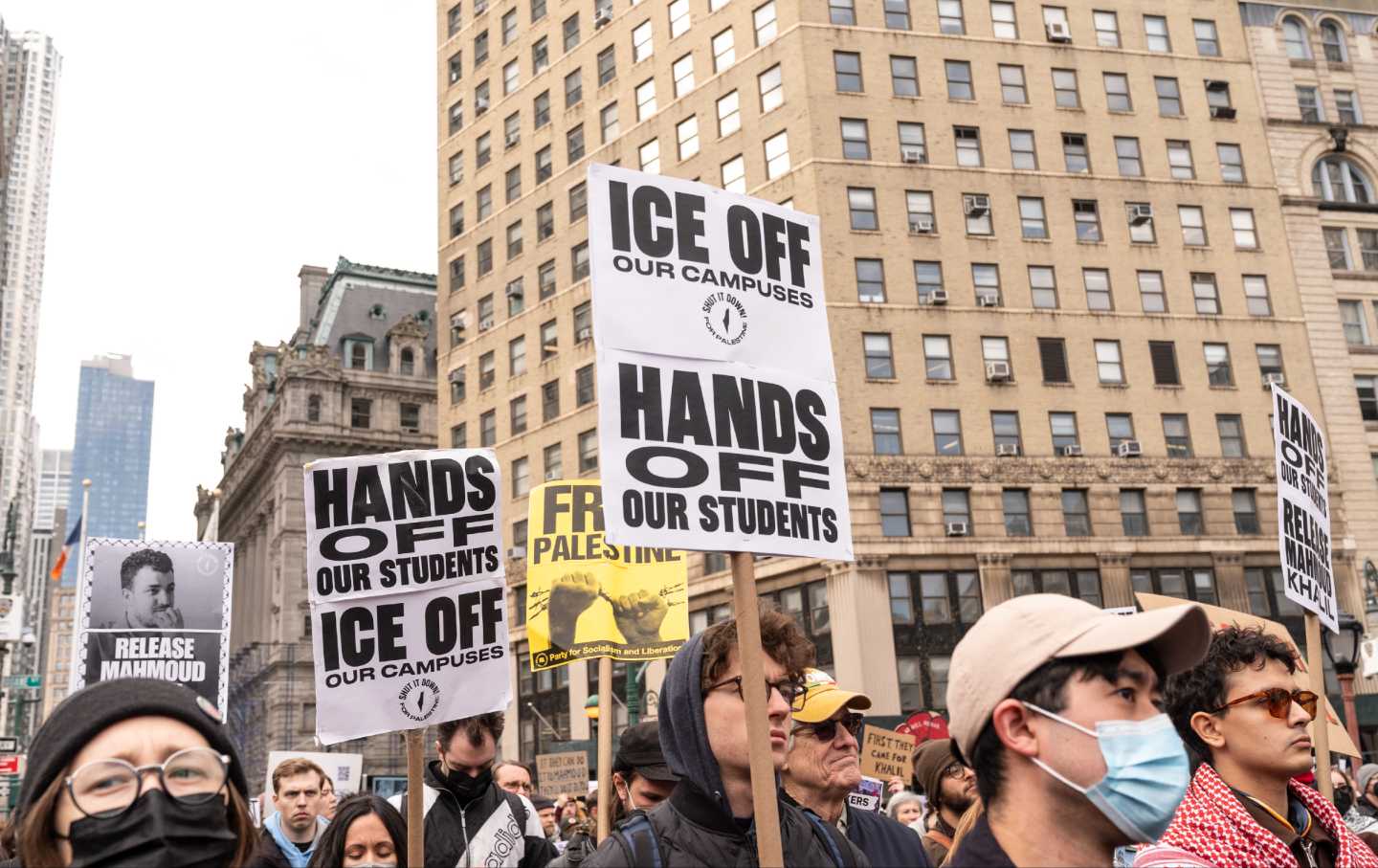
Columbia Is Betraying Its Students. We Must Change Course. Columbia Is Betraying Its Students. We Must Change Course.
The administration is choosing complicity over courage in the case of Mahmoud Khalil. It’s time for the faculty to demand a new path.

The Trans Cult Who Believes AI Will Either Save Us—or Kill Us All The Trans Cult Who Believes AI Will Either Save Us—or Kill Us All
What the Zizians, a trans vegan cult allegedly behind multiple murders, can teach us about radicalization and our tech-addled politics.
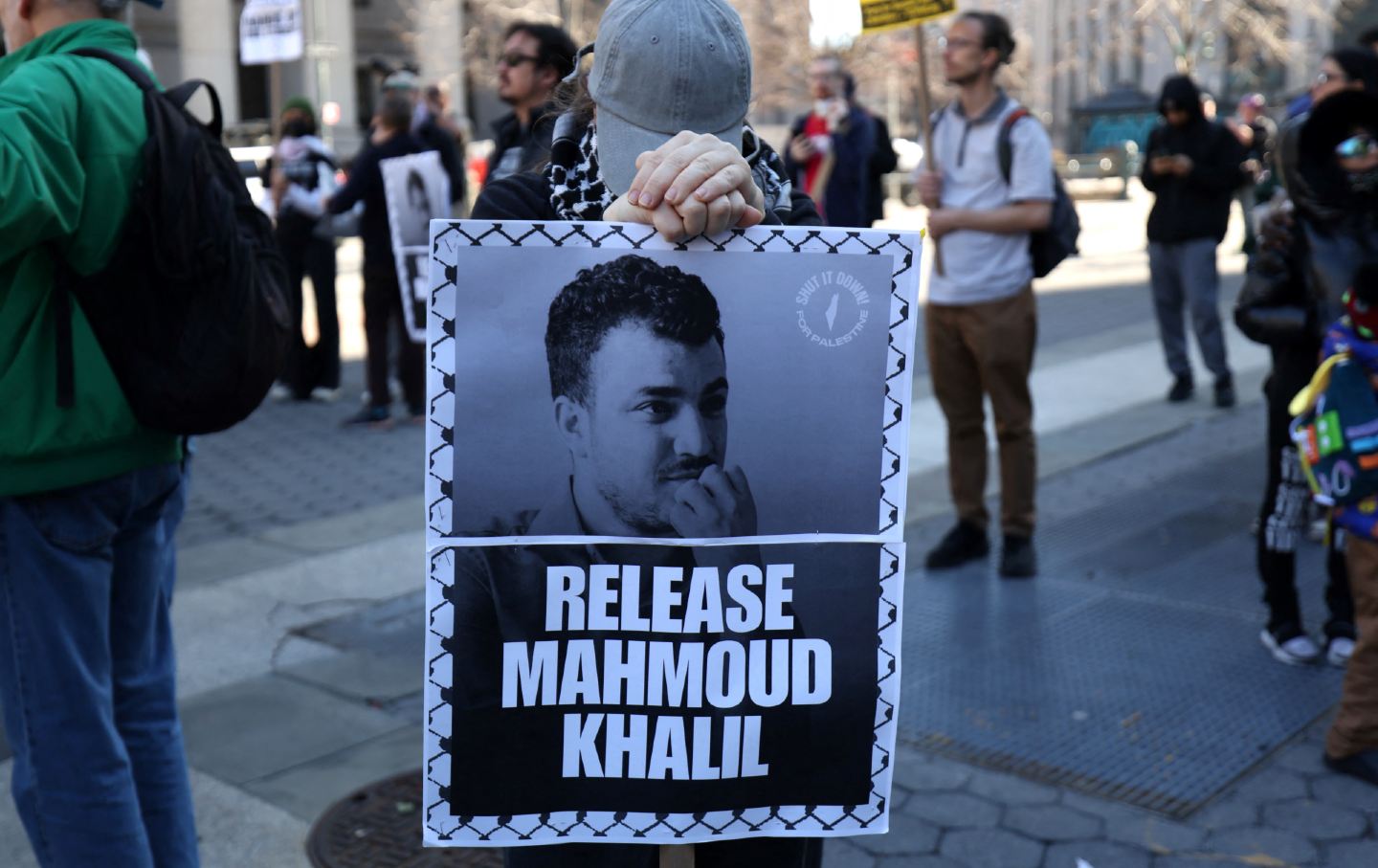
We Are Asking the Wrong Questions About Mahmoud Khalil’s Arrest We Are Asking the Wrong Questions About Mahmoud Khalil’s Arrest
The only relevant question is not “How can the government do this?” It is “How can we who oppose this fascist regime stop it?”

DOGE’s Private-Equity Playbook DOGE’s Private-Equity Playbook
Elon Musk's rampage through the government is a classic PE takeover, replete with bogus numbers and sociopathic executives.

White Flops Rejoice! White Flops Rejoice!
DEI is being snuffed out in DC. Mediocre whiteness reigns. And we’re all going to suffer for it.


